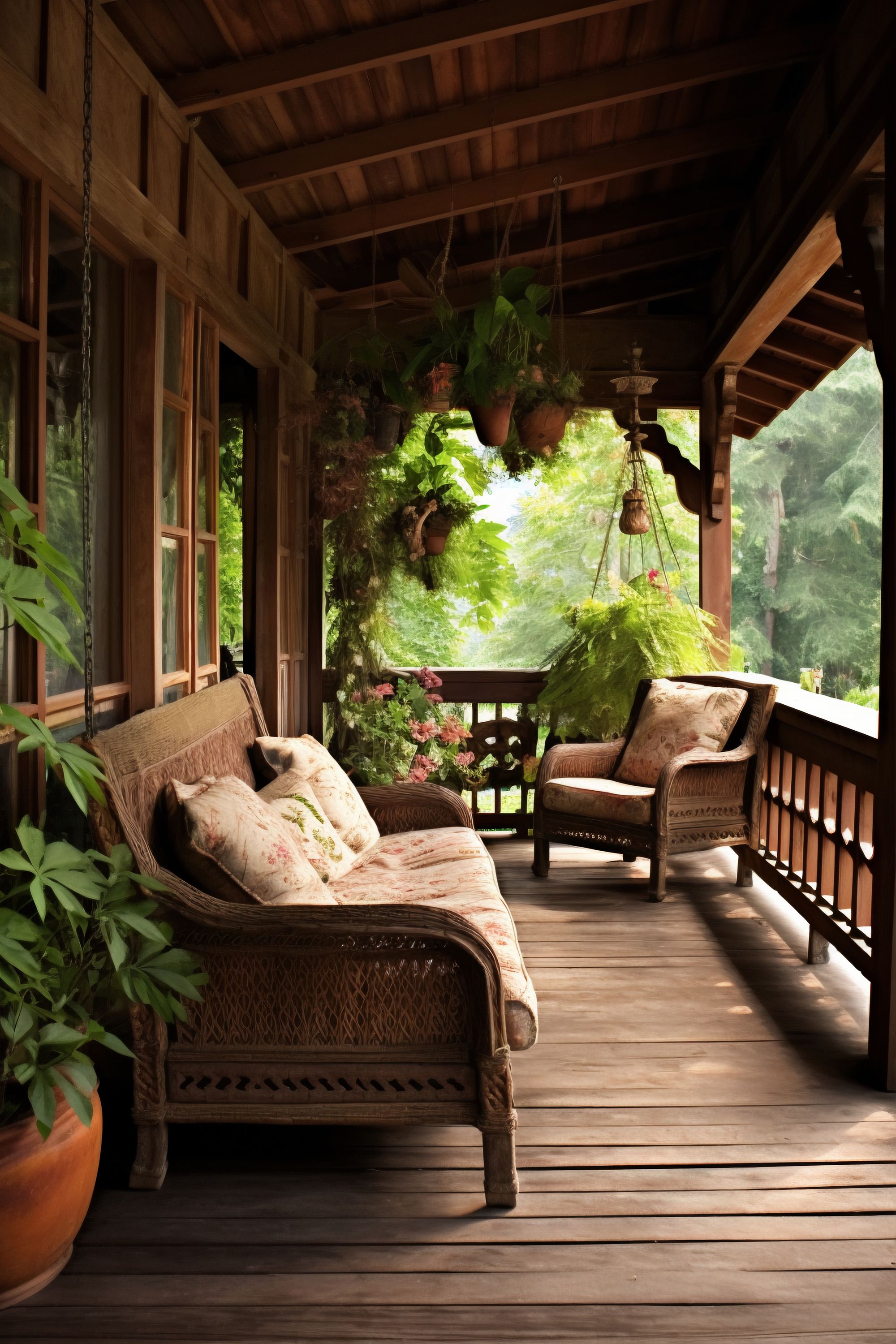Table of Contents
- Introduction: Embracing Outdoor Living
- Deck Remodeling on a Budget: Affordable Transformations
- Steps to Deck Remodeling: A Comprehensive Guide
- The Cost of Deck Remodeling: Investment Breakdown
- DIY vs. Professional Deck Remodeling: Pros and Cons
- Deck Decor Ideas: Styling Your Outdoor Haven
- Common Deck Remodeling Mistakes: Lessons to Learn
- Conclusion: Your Next Steps to a Revamped Deck
Key Takeaways
- Deck remodeling can significantly enhance your outdoor living space, adding value to your home and improving your quality of life.
- It's possible to remodel your deck on a budget by sourcing affordable materials, doing some tasks yourself, and planning your project well.
- The steps to deck remodeling involve careful planning, design, material selection, construction, and finishing touches.
- The cost of deck remodeling can vary widely, depending on factors like the size of the deck, the materials used, and whether you hire professionals or do it yourself.
- There are pros and cons to both DIY and professional deck remodeling. DIY can save money but requires time, skills, and tools. Professional services offer expertise and quality but at a higher cost.
- Deck decor can greatly enhance the functionality and aesthetic appeal of your deck, turning it into a true oasis. Ideas range from outdoor furniture and lighting to plants and accessories.
- Common deck remodeling mistakes include not planning adequately, underestimating costs, and neglecting maintenance. Learning from these can help ensure the success of your project.
- The decision to remodel your deck is an investment in your home and your lifestyle. With the right approach, it can be a satisfying and rewarding project.
Introduction
There's something incredibly gratifying about stepping onto your own deck, a glass of your favorite beverage in hand, and surveying a space that is uniquely yours. Outdoor living spaces like decks have the potential to be so much more than just an extension of your home. They can be a sanctuary, a place for family gatherings, a hub for entertaining friends, or simply a spot to enjoy the serenity of nature.
Revamping your outdoor living space, particularly through deck building and remodeling, is a journey that not only adds aesthetic appeal to your home but also significantly enhances its value. A well-designed and well-maintained deck can yield a high return on investment, often recouping more than 70% of its original cost, according to Remodeling Magazine's Cost vs. Value Report.
The benefits go beyond financial gains. Deck remodeling can transform an underutilized area into a functional and beautiful living space. Imagine a cozy seating area for family chats, a grill for weekend barbecues, or a fire pit for those chilly evenings.
In addition to providing an environment for relaxation and entertainment, a deck can also serve as a visual treat, adding character and charm to your home's exterior. You can choose from various materials, styles, and finishes to create a deck that complevably complements your home's architecture and your personal style.
However, like any home improvement project, deck remodeling requires careful planning, thoughtful design, and meticulous execution. It's not just about slapping on a new coat of paint or swapping out old furniture. It's about considering your needs, preferences, and budget, then creating a design that fulfills all these aspects while blending seamlessly with your home's existing design.
Whether you're considering a simple facelift or a complete overhaul, this guide will walk you through the key aspects of deck remodeling, from planning and budgeting to design and execution. Let's begin the journey to create your perfect outdoor oasis.

Deck Remodeling on a Budget
When it comes to deck remodeling on a budget, there are numerous ways to save without compromising on quality or style. It's all about creativity, resourcefulness, and smart planning.
For instance, consider Lisa and John, a couple from Philadelphia who transformed their old, worn-out deck into a stylish outdoor living space for under $1,000. They started by power washing and staining the existing deck, reviving its original beauty. They then added solar lights around the perimeter, providing a soft, ambient glow in the evenings. Finally, they repurposed some old indoor furniture with a fresh coat of weather-resistant paint, and added outdoor cushions for a pop of color.
Similarly, Karen, a single mom from Boston, revamped her small deck on a tight budget. She opted for a DIY approach, doing everything from sanding and painting to installing a new railing herself. She also made use of sales and discounts at local home improvement stores to purchase materials and decor items. The result was a cozy, inviting space where she and her son could enjoy their morning coffee or read books in the afternoon.
So, how can you achieve similar results? Here are some tips:
- Reuse and Repurpose: Like Lisa and John, see if there are elements of your current deck that can be reused or refreshed, such as the deck boards or railings. You can also repurpose indoor furniture or thrift store finds for your deck.
- Do It Yourself: If you're handy and have the time, doing the labor yourself can save a significant amount. There are plenty of online tutorials and workshops at home improvement stores to guide you.
- Shop Smart: Look for sales, discounts, and clearance items when shopping for materials and decor. Don't forget to check online marketplaces for used items in good condition.
- Choose Affordable Materials: While hardwoods look beautiful, they can be pricey. Consider alternatives like pressure-treated wood or composite decking. They're durable, require less maintenance, and are more budget-friendly.
- Simplify Your Design: A multi-level deck with intricate designs will cost more than a simple, single-level deck. Keep your design straightforward to save on costs.
- Plan and Set a Budget: This is perhaps the most crucial step. Before you start, determine how much you can afford to spend on your deck remodeling. Take into consideration everything from materials and labor to decor and unexpected costs. Having a clear budget will help you make smart decisions and avoid overspending.
Remember, deck remodeling doesn't have to break the bank. With a bit of creativity and careful planning, you can create a beautiful, functional outdoor space that suits your lifestyle and budget.
Steps for Deck Remodeling
Remodeling a deck is an exciting project, but it's also a complex one that requires careful planning and execution. Here's a step-by-step guide on how to approach a deck remodeling project:
- Assess the Existing Deck:
Start by taking a good look at your existing deck. Understand its current condition, size, and layout. Are there any repairs needed? Are there elements you want to keep or change? This step helps you identify what’s worth keeping and what needs modification. - Define Your Needs and Wants:
Identify how you want to use your deck. Do you need it for large gatherings, intimate family dinners, or as a personal relaxation spot? Your deck’s function will guide your design decisions. - Set a Budget:
Determine how much you're willing to spend on the remodel. Consider costs for materials, labor, furniture, and unexpected expenses. A well-defined budget keeps the project within manageable limits and prevents overspending. - Create a Design:
Based on your needs, wants, and budget, create a design for your deck. Consider aspects like size, shape, levels, railings, and built-in elements like seating or planters. You might want to work with a professional designer for this step, or use online design tools. - Choose Materials:
Select the materials for your deck. Your choice will depend on your budget, the look you want to achieve, and the amount of maintenance you're willing to do. Common materials include wood, composite decking, and PVC. - Get Required Permits:
Before you start construction, check with your local building department about necessary permits. It's crucial to ensure your deck remodel complies with local building codes. - Hire Professionals or DIY:
Decide whether you'll be doing the work yourself or hiring professionals. DIY can save money but requires skills and time. Professional contractors can ensure high-quality work but come at a cost. - Construction:
Now, it's time to build. If you're working with professionals, they'll handle this part. If you're doing it yourself, make sure you have the right tools and safety equipment. The construction phase typically involves preparing the site, setting the foundation and posts, installing the ledger and joists, laying the decking, and building the railings. - Add Finishing Touches:
Once the construction is done, add your finishing touches. This can include painting or staining the deck, adding lighting, setting up furniture, or planting greenery. These elements bring personality and functionality to your deck. - Regular Maintenance:
To keep your deck looking great and extend its lifespan, regular maintenance is key. This could include cleaning, resealing, or restaining at regular intervals.
Each stage of deck remodeling is important and builds on the previous one. By following these steps, you can maintain control over your project, ensuring that the final result aligns with your vision and expectations.
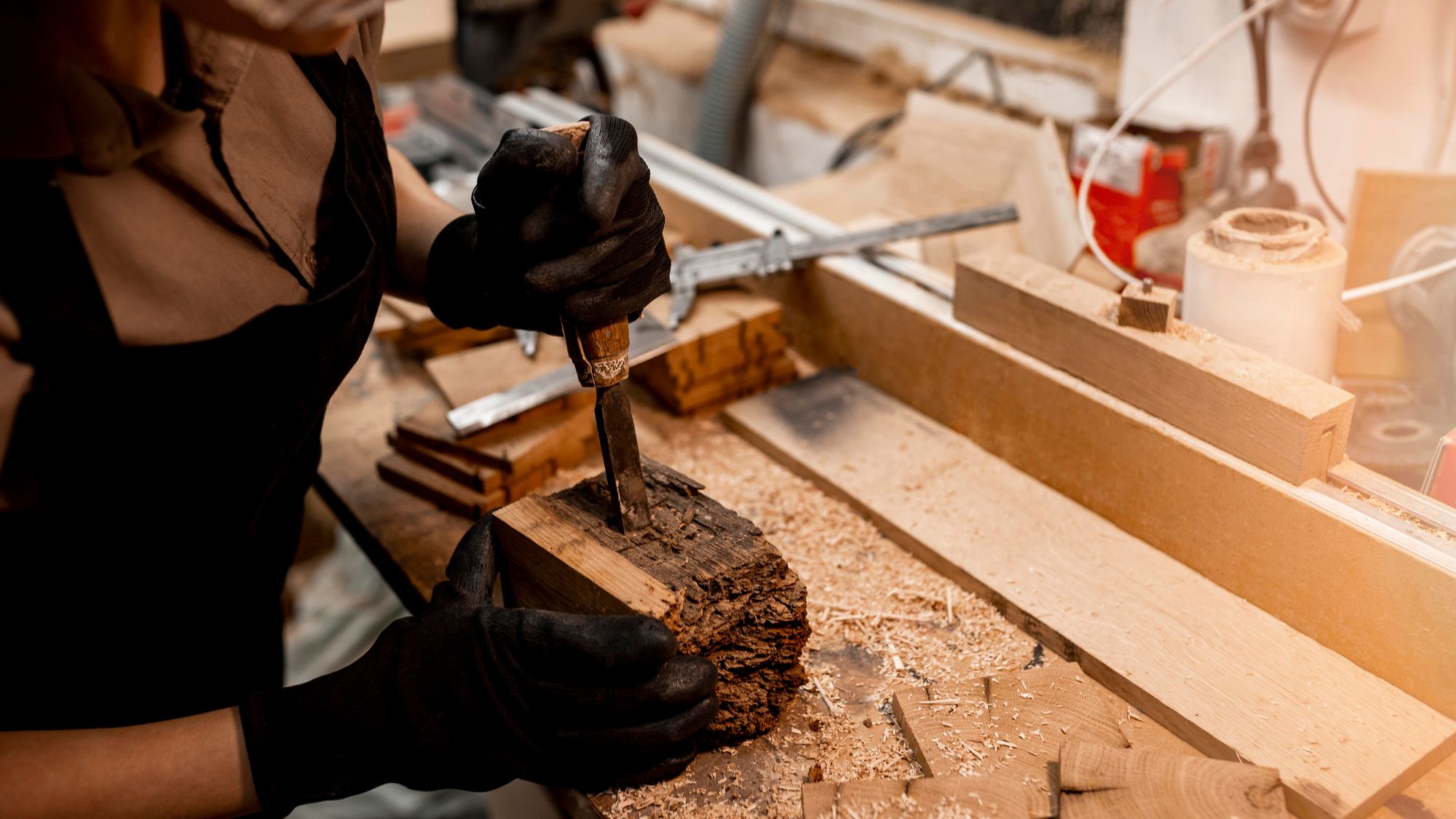
Cost of Deck Remodeling
The cost of a deck remodeling project can vary widely, depending on numerous factors. Here's a breakdown of potential costs to help you budget effectively:
- Size of the Deck:
One of the most significant cost factors is the size of the deck. The larger the deck, the more materials and labor will be required, and the higher the cost. - Design Complexity:
A simple, rectangular deck is relatively easy and cheap to build. However, if your design includes multiple levels, intricate patterns, built-in seating, or other complex features, the cost will increase. - Railings:
The type and design of railings you choose can also add to the cost. Basic wood railings are less expensive, while glass or composite railings can add significantly to the cost. - Labor Costs:
If you're hiring a professional contractor, labor costs can make up a significant portion of your budget. Labor costs can range from $10 to $30 per square foot, depending on the complexity of the project. - Additional Features:
Additional features like built-in benches, a pergola, a fire pit, or outdoor lighting can add to the overall cost. It's important to consider these features in your initial budget to avoid surprise costs later on. - Permits:
Depending on your local building codes, you may need to secure a permit for your deck remodeling project. Permit prices vary depending on the area but could add a few hundred dollars to your budget. - Materials:
The type of material you choose for your deck can significantly impact the overall cost.
When it comes to remodeling your deck, choosing the right material is crucial. The material not only impacts the appearance of your deck but also its durability, maintenance needs, and cost. Below is a comprehensive guide comparing the most popular decking materials: wood, composite, and PVC, to help you make an informed decision.
Wood Decking
Pros:
- Natural Aesthetics: Wood decking offers a classic and natural look that can't be matched by synthetic materials. It adds warmth and beauty to any outdoor space.
- Cost-Effective: Certain types of wood, like pressure-treated wood, are among the most affordable decking options.
- Variety: There's a wide range of wood types to choose from, including cedar, redwood, and tropical hardwoods, each offering different colors and grain patterns.
Cons:
- Maintenance: Wood decks require regular maintenance, including sanding, staining, or sealing every few years to protect against weather, rot, and insects.
- Durability Concerns: Some wood types are susceptible to warping, cracking, and splintering over time, especially if not properly maintained.
- Environmental Impact: The demand for tropical hardwoods contributes to deforestation, although sustainably sourced options are available.
Maintenance Needs: High - Regular cleaning, annual staining or sealing.
Longevity: 10-30 years, depending on the wood type and maintenance.
Cost: $15-$35 per square foot, depending on the wood type and installation complexities.
Composite Decking
Pros:
- Durability: Composite decking is designed to resist fading, staining, scratching, and mold, making it a durable option for high-traffic areas.
- Low Maintenance: Unlike wood, composite decking doesn't require staining or sealing. An occasional wash with soap and water is typically all that's needed.
- Sustainability: Most composite materials are made from recycled plastic and wood fibers, making them an eco-friendly choice.
Cons:
- Cost: Composite decking is more expensive upfront than most wood options.
- Heat Retention: Some composite decks can get very hot under direct sunlight, making them uncomfortable to walk on barefoot.
- Less Natural Look: While high-quality composites mimic the look of wood, they still lack the natural variation and texture of real wood.
Maintenance Needs: Low - Periodic washing with soap and water.
Longevity: 25-30 years or more with proper care.
Cost: $30-$45 per square foot, including installation.
PVC (Polyvinyl Chloride) Decking
Pros:
- Weather Resistance: PVC decking is highly resistant to moisture, making it ideal for areas with high humidity or proximity to water.
- Maintenance: PVC decks require minimal maintenance, similar to composite decking, without the need for staining or sealing.
- Lightweight: PVC is lighter than composite, making it easier to handle and install, potentially lowering installation costs.
Cons:
- Cost: PVC decking is one of the more expensive materials on the market.
- Appearance: Some find PVC decking to look the least natural, with a more plastic-like appearance.
- Thermal Expansion: PVC can expand and contract more significantly with temperature changes, which may require special consideration during installation.
Maintenance Needs: Very Low - Occasional washing to remove dirt and debris.
Longevity: Up to 30 years with minimal maintenance.
Cost: $40-$50 per square foot, including installation.
Making the Choice
When selecting the material for your deck remodeling project, consider not just the initial cost but also the long-term maintenance needs, durability, and aesthetic preferences. Wood offers natural beauty and affordability but requires more upkeep. Composite and PVC offer durability and low maintenance at a higher initial cost, with varying degrees of natural appearance. Your specific situation, including climate, usage, and budget, will determine the best material for your outdoor oasis.
Considering these factors, a basic deck remodel with pressure-treated wood, a simple design, and DIY labor could cost as low as $15 per square foot. On the other hand, a large, intricate deck remodel with high-end materials, professional labor, and additional features could cost upwards of $45 per square foot.
Remember, these are estimates, and actual costs can vary. It's always a good idea to get multiple quotes and factor in an additional 10-20% for unexpected costs when planning your budget.
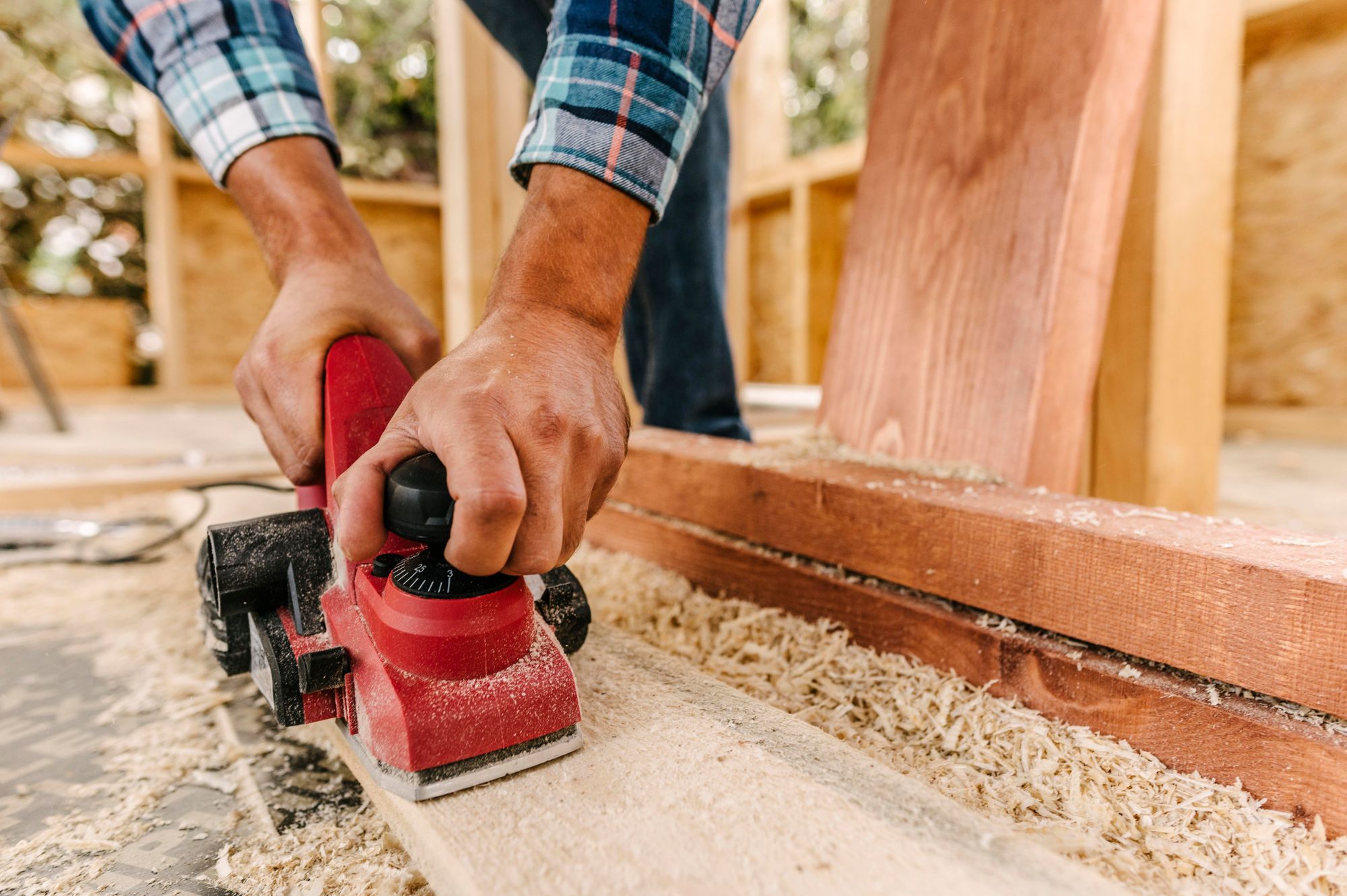
DIY vs. Professional Deck Remodeling
Choosing between DIY and professional deck remodeling depends largely on your skills, budget, and the complexity of the project. Each option has its pros and cons.
DIY Deck Remodeling
- Pros:-
Cost-Effective: DIY remodeling can save you considerable labor costs. According to HomeAdvisor, professionals charge between $10 to $30 per square foot for labor alone.
Personal Satisfaction: There's a sense of accomplishment that comes with completing a deck remodel on your own.
- Cons:-
Time-Consuming: DIY projects can take longer, especially if you're learning as you go.
Quality and Safety Concerns: Without professional expertise, you might face challenges that can affect the quality and safety of your deck.
DIY Guidance for Deck Remodeling
- Replacing Deck Boards
Step-by-Step Tutorial:
Materials Needed: Replacement boards, nails/screws, saw, hammer/drill, pry bar, safety goggles.
Step 1: Assess and Plan
- Inspect your deck to identify damaged boards.
- Measure the dimensions of the boards to be replaced and purchase the correct size and type of wood.
Step 2: Remove Old Boards
- Use a pry bar to carefully lift the damaged boards. Start at one end and work your way along, ensuring not to damage adjacent boards.
- Remove any nails or screws with a hammer or drill.
Step 3: Cut New Boards
- Measure and cut the new boards to match the length of the old ones, using a saw.
- Ensure cuts are straight and clean for a professional finish.
Step 4: Install New Boards
- Place the new boards in position. Ensure they fit snugly and are aligned with the existing deck structure.
- Secure the boards with nails or screws, using a hammer or drill. Ensure the fasteners are evenly spaced and flush with the board surface.
Step 5: Finishing Touches
- Sand any rough edges for a smooth finish.
- Stain or seal the new boards to match the rest of your deck.
- Staining Your Deck
Materials Needed: Deck stain, sandpaper, brushes/rollers, painter's tape, protective gear.
Step 1: Preparation
- Clean your deck thoroughly and let it dry.
- Sand any rough areas to ensure a smooth surface for staining.
Step 2: Apply Stain
- Stir the stain well before application.
- Apply stain with a brush or roller, working in sections. Follow the grain of the wood for best results.
- Use painter’s tape to protect areas you don’t want stained.
Step 3: Let It Dry
- Allow the stain to dry completely, according to the manufacturer’s instructions.
Step 4: Apply a Second Coat (if necessary)
- For deeper color and protection, a second coat may be applied. Ensure the first coat is dry before proceeding.
- Adding Lighting to Your Deck
Materials Needed: Outdoor lights, drill, screws, electrical cable (if needed), outdoor outlet (if needed).
Step 1: Plan Your Layout
- Decide where you want your lights. Consider safety, ambiance, and functionality.
- Ensure there is an outdoor electrical outlet nearby. If not, you may need to install one or opt for solar-powered lights.
Step 2: Install Fixtures
- For post lights: Secure the light fixtures to the posts using screws.
- For string lights: Hang string lights using hooks or clips that can be screwed into the deck’s frame.
Step 3: Connect to Power
- For electric lights, run an outdoor-rated electrical cable from your power source to the lights, securing it safely out of the way.
- For solar lights, ensure the solar panel is positioned to receive adequate sunlight.
Step 4: Test Your Lights
- Once installed, test your lights at night to ensure they provide the desired effect and adjust as necessary.
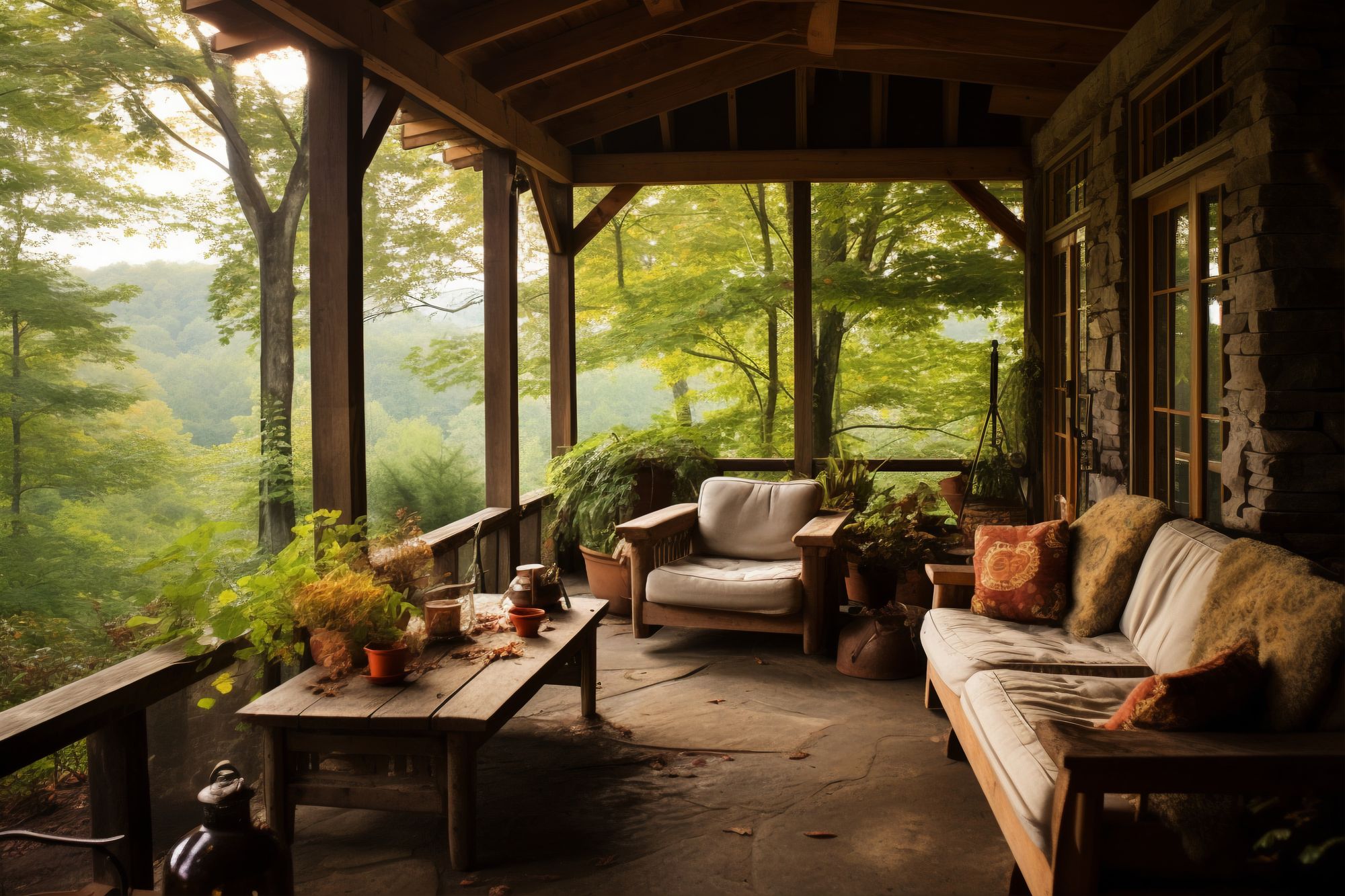
Enhancing Understanding with Visual Aids
While these instructions provide a basic guide, visual aids like videos or photo tutorials can greatly enhance your understanding and execution of these projects. Platforms such as YouTube offer numerous DIY deck remodeling tutorials that demonstrate each step in detail. When searching, look for tutorials that match your specific project needs and have high viewer ratings for reliability and clarity.
Safety Note: Always prioritize safety when undertaking DIY projects. Wear protective gear, follow tool instructions carefully, and ensure all installations meet local building codes and safety standards.
Professional Deck Remodeling
- Pros:-
High-Quality Work: Professionals bring expertise and experience, ensuring high-quality work.
Time-Efficient: Professionals can complete the job faster, allowing you to enjoy your remodeled deck sooner.
Compliance with Regulations: Professionals are familiar with local building codes and regulations, ensuring your deck remodel is compliant.
- Cons:-
Cost: Hiring professionals can significantly increase the cost of your deck remodeling project.
Less Control: Working with professionals might mean less personal control over every detail of the project.
Professional Hiring Tips for Deck Remodeling
Hiring a professional deck builder can transform your outdoor living space efficiently and with high-quality results. Here's how to ensure you select the right professional for your project and work together effectively.
Selecting a Professional Deck Builder
- Research and Referrals
- Start by searching online for deck builders with strong reviews and ratings.
- Ask for referrals from friends, family, or neighbors who have had successful deck projects.
- Verify Credentials
- Check that the builders are licensed, insured, and bonded. This protects you in case of accidents or damage.
- Look for memberships in professional associations, which often require members to adhere to strict quality and ethical standards.
- Review Their Portfolio
- Request to see examples of their previous work to assess their craftsmanship and style compatibility with your vision.
- Ask for references and follow up with them to inquire about their satisfaction with the project.
- Get Multiple Quotes
- Obtain detailed quotes from at least three contractors to compare prices, materials, and timelines.
- Ensure the quotes include everything from materials and labor to cleanup and waste disposal.
Questions to Ask Before Hiring
- How long have you been building decks?
- Can you provide a detailed project timeline?
- How do you handle changes or unforeseen issues during the project?
- What warranties or guarantees do you offer on your work?
- Will you handle obtaining permits and ensuring the project complies with local building codes?
Understanding Contracts
- A contract should include detailed information about the project scope, materials, costs, payment schedules, and timelines.
- Ensure the contract outlines how changes to the project scope will be handled, including approval processes and additional costs.
- Verify that the contract includes a clause about dispute resolution and liability insurance.
Communicating Your Vision
- Provide clear and detailed descriptions of what you want, including styles, materials, and features. Visual aids like sketches or photos can be helpful.
- Stay open to suggestions from the professional. Their experience may lead to recommendations that enhance the project's outcome.
- Establish regular check-ins to discuss the project's progress, address any concerns, and make adjustments as needed.
Managing the Project
- Be clear about your expectations for the project, including the work schedule, daily start and end times, and cleanup.
- Keep a record of all communications and decisions made during the project.
- Respect the work area boundaries and the professional's expertise, allowing them to work efficiently and effectively.
Final Thoughts
The key to a successful deck remodeling project lies in choosing the right professional deck builder and maintaining clear, open communication throughout the process. By taking the time to carefully select a builder, asking the right questions, understanding your contract, and effectively communicating your vision, you can ensure a smooth process and a final result that meets or exceeds your expectations. Remember, a well-planned deck can provide years of enjoyment and add significant value to your home.
Deck Decoration Ideas
Deck décor is a fantastic way to enhance both the functionality and aesthetic appeal of your outdoor space. Here are some ideas to inspire you:
- Outdoor Lighting
Adding lights can transform your deck into a cozy space for nighttime use. Consider string lights for a magical feel, or install solar lights for a more energy-efficient solution. - Planters and Greenery
Lush green plants can give your deck a refreshing feel. Use a mix of large planters and hanging baskets. You can even create a mini herb garden for a practical touch. - Outdoor Rugs
An outdoor rug can define your seating area and add a pop of color to your deck. Choose a rug that's durable and easy to clean. - Comfortable Seating
Invest in comfortable outdoor furniture. This could be a dining set, loungers, or a hammock. Consider furniture with storage to maximize space. - Fire Pit or Heater
A fire pit or outdoor heater can make your deck a comfortable spot for chilly evenings. They also act as a focal point for outdoor gatherings. - Shade Solutions
Adding a pergola, umbrella, or canopy can provide much-needed shade during sunny days, increasing the usability of your deck. - Decorative Accents
Add personal touches with decorative accents like outdoor cushions, lanterns, or a stylish outdoor bar cart. - Privacy Features
If your deck is in clear view of neighbors, consider adding privacy screens or curtains. These can also contribute to the overall décor.
By incorporating these deck décor ideas, you can create a welcoming and functional outdoor space that reflects your personal style. Remember, the best deck is one that offers a balance of comfort, beauty, and practicality.
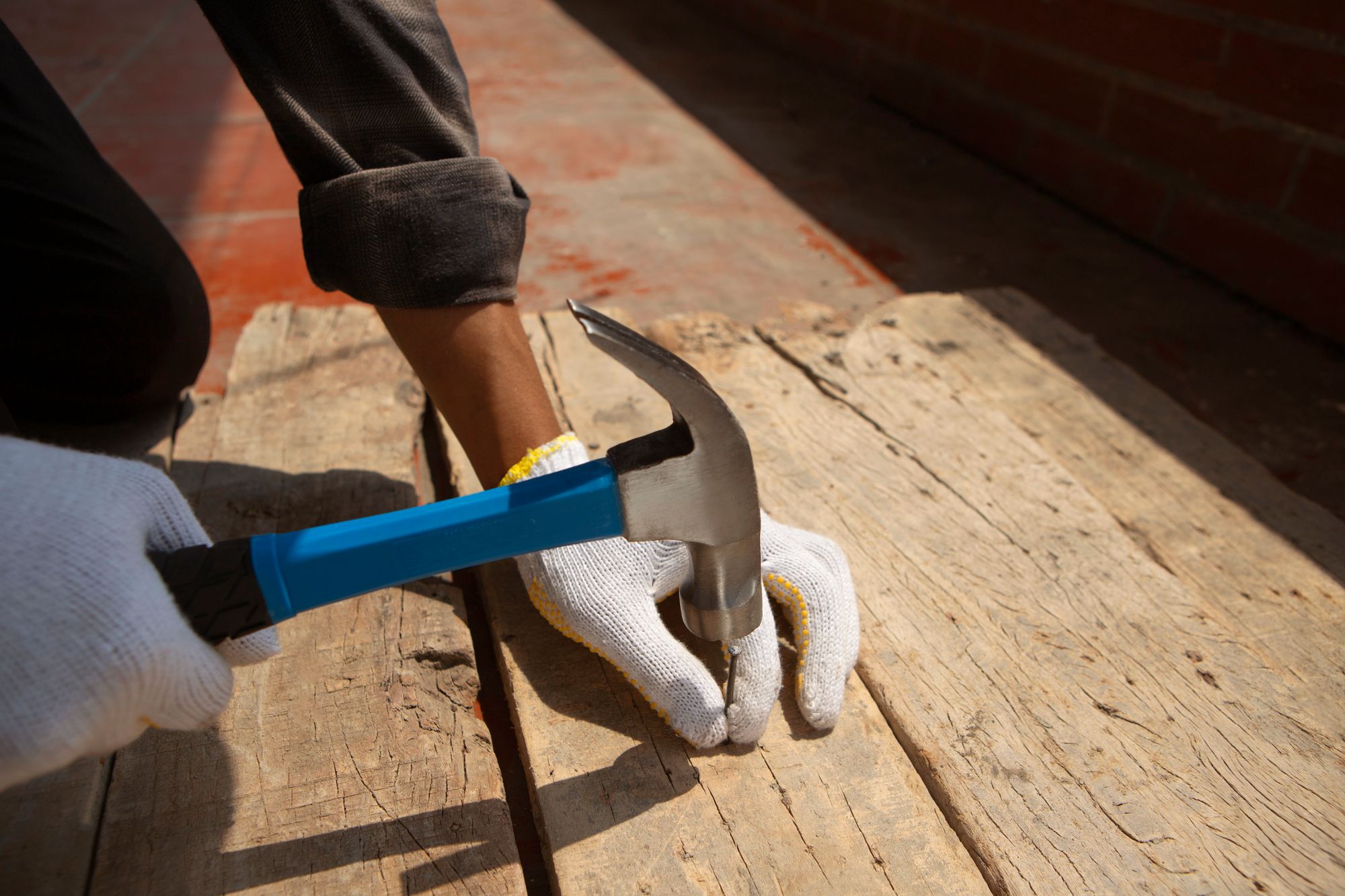
Maintenance Schedule for Your Deck
A well-maintained deck not only looks better but also lasts longer, ensuring you get the most out of your investment. Here's a comprehensive maintenance schedule to keep your deck in top condition:
Regular Maintenance (Every 3-6 Months)
- Cleaning: Sweep the deck to remove debris and dirt. Use a mild cleaner and a soft brush to clean the surface thoroughly, preventing mold and mildew buildup.
- Inspection: Check for any signs of wear, such as loose boards, protruding nails, or damaged railings. Pay special attention to areas that are regularly wet or hidden under planters and furniture.
Annual Maintenance
- Deep Cleaning: Once a year, give your deck a deep clean. For wood decks, consider using a wood cleaner to remove any stubborn stains. Composite decks may only need soap and water.
- Sealing: For wood decks, apply a water-repellent sealant to protect against moisture damage. This step is crucial for preventing rot and extending the life of your deck.
- Staining or Painting: Depending on the condition of the wood and the desired aesthetic, apply a fresh coat of stain or paint to restore the deck's appearance.
Periodic Maintenance (Every 2-3 Years)
- Structural Inspection: Hire a professional to inspect the deck's structure, particularly if you notice any signs of sagging, swaying, or significant wear. This is crucial for ensuring the deck's safety and integrity.
- Repairs: Address any issues found during inspections promptly. This may include replacing worn-out boards, securing loose railings, or fixing any structural damage.
Local Regulations Overview
Understanding and complying with local building codes and permit requirements is essential for any deck building or remodeling project. Failure to do so can lead to fines, legal issues, and even the need to dismantle non-compliant structures. Here's how to navigate local regulations:
- Research: Start by visiting your local building department's website or contacting them directly. Look for specific guidelines related to deck construction, including size, height, and materials allowed.
- Permits: Most localities require a permit for deck construction or significant remodeling. The permit application process may involve submitting detailed plans and specifications for review.
- Inspections: In addition to obtaining a permit, your deck project might require one or several inspections to ensure compliance with local codes and safety standards. Understand the inspection process and schedule accordingly.
- Hiring Professionals: If you decide to hire a contractor, ensure they are familiar with local regulations and will handle the permit application and inspection process on your behalf.
- Neighbor Considerations: Be aware of any regulations regarding property lines, easements, and view obstructions. It's also good practice to inform your neighbors about your project to avoid disputes.
By maintaining your deck regularly and ensuring compliance with local regulations, you can enjoy a beautiful, safe, and long-lasting outdoor living space.
Common Deck Remodel Mistakes
Deck remodeling is a significant investment, and certain mistakes can lead to unnecessary expenses or dissatisfaction with the end result. Here are some common mistakes to avoid:
- Not Planning Ahead
A common mistake is not having a detailed plan before starting the remodel. This can lead to unforeseen problems and costs. Ensure you have a clear design, budget, and timeline before you begin. - Choosing the Wrong Materials
Choosing materials based solely on price can lead to higher maintenance costs and a shorter deck lifespan. Consider factors like durability, maintenance, and local climate when choosing deck materials. - Ignoring Building Codes and Permits
Failing to adhere to local building codes or not obtaining necessary permits can lead to costly fines and safety issues. Always check with your local building department before starting your project. - Overlooking Drainage
Not considering proper water drainage can lead to water damage and deck instability. Ensure your deck design includes adequate drainage. - DIY Without Proper Skills
While DIY can save money, trying to do it without the right skills can lead to mistakes and safety issues. If in doubt, hire a professional. - Not Considering Future Maintenance
Overlooking future maintenance needs during the design phase can lead to higher costs and effort in the long run. Consider easy-to-maintain designs and materials.
Experts like Tom Silva from "This Old House" emphasizes the importance of planning and using quality materials. He also advises homeowners to consider hiring professionals for aspects of the remodel that are beyond their skills.
By being aware of these common mistakes and taking steps to avoid them, you can ensure your deck remodel project is a success.
In conclusion, a deck remodeling project can be an exciting yet challenging endeavor. It involves deciding between DIY and professional remodeling, coming up with creative décor ideas, and avoiding common mistakes.
Choosing between DIY and professional services depends largely on your skills, budget, and the complexity of the project. While DIY can be cost-effective, it may be time-consuming and might not guarantee the quality and safety that professionals can provide. On the other hand, professional remodeling can ensure high-quality work, time-efficiency, and compliance with local regulations, but it may be more expensive.
Decorating your deck can significantly enhance its functionality and aesthetic appeal. From installing outdoor lighting and planters to adding comfortable seating and decorative accents, there are numerous ways to make your deck a beautiful and functional extension of your home.
However, it's crucial to avoid common mistakes during your deck remodeling project. These include not planning ahead, choosing the wrong materials, ignoring building codes and permits, overlooking drainage, undertaking DIY without proper skills, and not considering future maintenance.
Deck remodeling can transform your outdoor space, providing a perfect place for relaxation, entertainment, or simply enjoying nature. Whether you decide to take on the project yourself or hire professionals, it's essential to plan carefully, choose the right materials, comply with regulations, and consider the future maintenance needs of your deck.
Remember, the best deck is one that reflects your personal style and meets your specific needs. With careful planning and execution, you can create an outdoor haven that you and your family can enjoy for years to come. So, why wait? Start planning your deck remodeling project today!


